2013 Fantasy Baseball, The Rubber: Remaining Schedules for Starting Pitchers
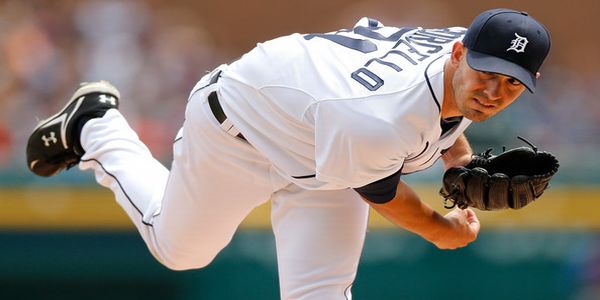

Source: Gregory Shamus/Getty Images North America
At this point in the season, each team has about 11 more trips through their starting rotation. I thought it would be helpful to see which rotations face the easiest and toughest competition over the final two months. With that information, we can identify some guys to add off the waiver wire and some potential trade targets. To figure out who has the easiest and toughest remaining schedules, I put the remaining schedule for each team in an Excel sheet and then placed the wRC+ of the opposing team next to each remaining game. That allowed me to average the opposition’s wRC+ while weighting the average to take into account the number of times that particular opposing team will be faced. If you’re a visual person, here’s an example of what I did for the Diamondbacks that might help you understand my process.
In case you’re not familiar with wRC+, it’s simply an advanced stat that quantifies a team’s total offensive value and compares it to league average. League average this year is about 96. The farther you get above 96, the better the team’s offense is. The farther you get below 96, the worse the team’s offense is. With that said, here is a chart showing you the average opposition wRC+ for each team from here on out.
The teams in green have an average opposition wRC+ that is two standard deviations or more below the mean; the teams in yellow have an average opposition wRC+ that is between one and two standard deviations below the mean. Pitchers on these teams have the easiest remaining schedules. The teams in red have an average opposition wRC+ that is two standard deviations or more above the mean; the teams in orange have an average opposition wRC+ that is between one and two standard deviations above the mean. Pitchers on these teams have the toughest remaining schedules.
One flaw with this exercise is that it does not look into the schedules that specific pitchers will face. But given that we can’t be certain about whether certain pitchers will pitch every fifth day as opposed to every fifth game, it could be futile to look at specific pitcher schedules. And that’s without factoring in potential injuries that could affect rotations and schedules.
OK, enough foreplay. Let’s talk names and start by talking about under-owned starters for Atlanta, Washington, Detroit and Philadelphia who could be good waiver wire adds. Specifically, let’s talk about Alex Wood (3.7%) and Rick Porcello (13.1%).
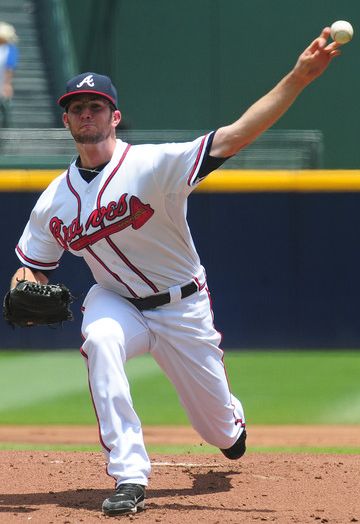
Source: Scott Cunningham/Getty Images North America
Wood took the spot at the back end of the Atlanta rotation that was left vacant after the injuries to first Paul Maholm and then Tim Hudson. Wood earned the call up by posting a 1.73 ERA, 0.99 WHIP, 25.2 K% and 6.8% BB% in 24 starts between A, AA and AAA. And in 33.1 big league innings he has a 3.51 ERA, 2.46 xFIP, 27.9% K%, and 8.1% BB%. The kid clearly has skills, particularly strikeout skills. And the schedule is obviously going to be great from here on out. If he pitches every fifth game, he’ll face Philadelphia three times, Washington twice, Miami, St. Louis, Cleveland, the Mets, San Diego and Milwaukee. Aside from the starts against St. Louis and Cleveland, that is a sweet, sweet schedule.
The problem is that Wood may not be in the rotation for the remainder of the year even if he pitches well. Paul Maholm seems to be on track for a return in mid-August. If he does make it back by then and everyone else remains healthy, Wood would probably be the odd-man out. But he has at least two more starts with really good match ups, so he’s worth an add just for that. But you should hope he keeps his job for the duration of the season because there’s an outside shot he could have a run similar to the one that Kris Medlen had at the end of last season against a very soft schedule.
As for Porcello, the best reason to pick him up is that the Tigers won’t face the Angels again. In two starts against the Angels, Porcello allowed 16 earned runs over just five innings. In his other 107.1 innings against everyone but the Angels, Porcello has a 3.35 ERA. Of course, you can’t just take out those starts against the Angels. But if you owned Porcello at the times he faced the Angels, you shouldn’t have been starting him against them. The Angels have the second best wRC+ in the league against right-handed pitching like Porcello. Given Porcello’s past, you would have been foolish not to leave him on the bench in that match up. But going forward there aren’t many match ups to avoid. The Tigers have one difficult stretch in late August/early September where they’ll face Boston, Oakland and Cleveland, which are all teams that have above average offenses against right-handed pitching. But of the other eight or nine teams Porcello will face, there isn’t a single one that is intimidating. With eight or nine great match ups left, Porcello and his 3.24 xFIP are worth adding.
As far as guys you should look to trade for, just remember to give all of the guys on the four teams at the top of the list a little extra bump in value if they come up in trade talks. But as far as guys you should specifically target, we have to look and see if any who are under performing are worth targeting for the cushy stretch run schedule. For example, you can’t target Mike Minor and Julio Teheran because they’ve been pitching great and will cost you full freight. But Kris Medlen has struggled, and Brandon Beachy looked bad in his first start back. Are any of those struggling guys on the teams with good remaining schedules worth going after?

Source: Gregory Shamus/Getty Images North America
In addition to Medlen and Beachy, we can also throw Justin Verlander, Cole Hamels and Dan Haren into the mix. In fact, let’s just focus on those three because if Wood pitches well, he could keep his spot and force one of those two out when Maholm returns. And actually, let’s go ahead and throw Haren out. His strikeout and walk skills look so tempting, but his refusal to issue walks leads to catching too much plate too often and giving up too many home runs. In other words, he has JBS (Joe Blanton Syndrome).
As for Verlander and Hamels, their names have been bandied about all season as buy-low targets. Our very own Josh Kay has looked into both and shown that their troubles aren’t just a result of bad luck. These guys have not displayed the same level of skill that they have in the past. And Verlander hasn’t shown signs of turning it around. If you take a look at his monthly splits, you’ll see that his velocity is still down, his strikeout rate was lower in July than in any other month, and his walk rate was above league average for the third straight month. Despite the cushy schedule, it would be a big risk to take on JV at this point. Of the two, Hamels is the guy it’s safer to go after. His monthly splits look much more encouraging. His strikeout and walk skills have been above average in every month other than April, and his xFIP has been in the mid-to-low threes in each of the last three months. With this soft schedule, it wouldn’t be a surprise to see Hamels see some nice positive regression.
As for the starters on the three teams with the toughest schedules, I wouldn’t recommend going out and actively trying to get rid of good pitchers. However, if you’re negotiating a deal, you may be able to win the value battle by selling a guy who may be in for a bit of regression with the tough schedule.


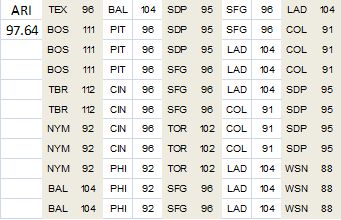
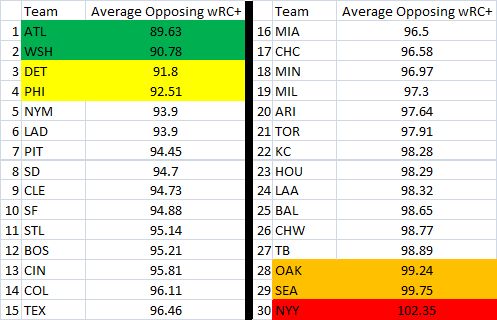

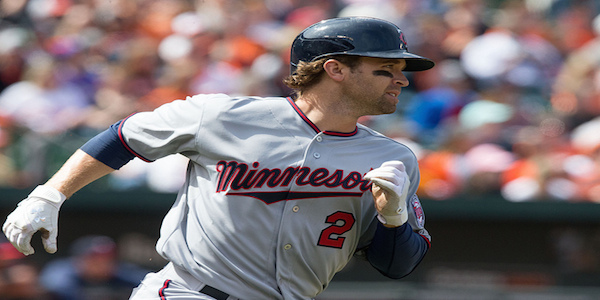


2 Comments
Thank you for this purpose article. That’s all We can say. You most likely have made this website into a product special. You clearly realize what what you are doing, you’ve covered plenty of bases. Bless you!
For hottest news you have to pay a visit world-wide-web and on web I found this web page as a
finest website for hottest updates.